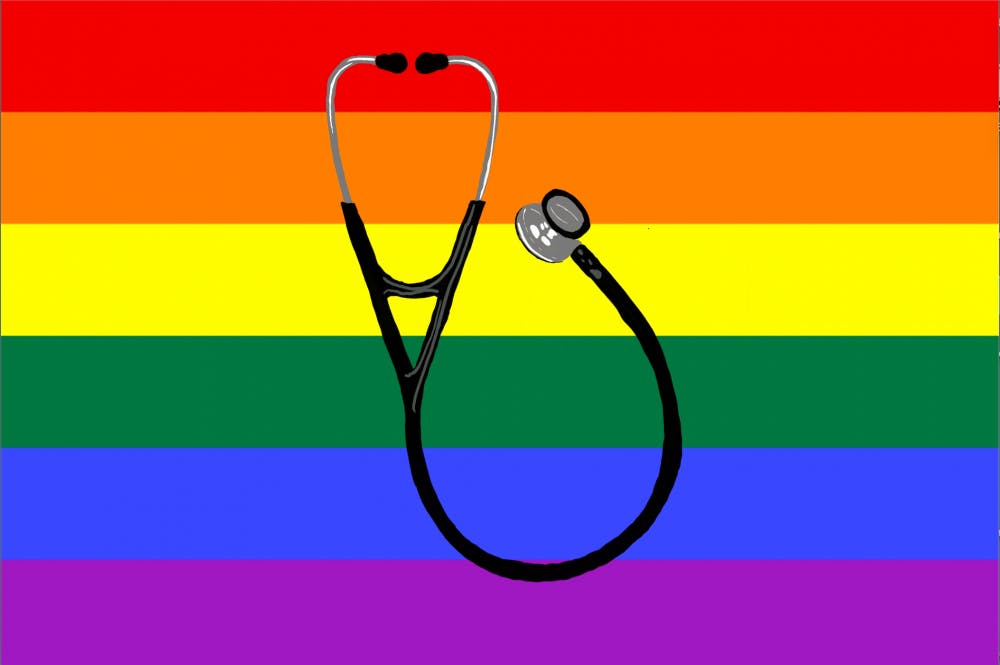Lesbian, gay and bisexual medical students are more likely to experience burnout and to report perceived mistreatment by other members of the medical community than their heterosexual classmates are, according to a study published last month conducted by Brown and Yale researchers.
Burnout, which is characterized by prolonged periods of stress and emotional exhaustion, is prevalent in the medical field and increases the likelihood that medical trainees and physicians drop out of the field.
“We thought this would be a good opportunity to see how this particularly marginalized group experiences mistreatment, and how that can contribute to a lack of diversity (in medicine) moving forward,” said Dowin Boatright, assistant professor of emergency medicine at the Yale School of Medicine and an author of the study.
The researchers wanted to test whether medical students who identify as LGB experience burnout at a higher rate than their heterosexual peers, and, if so, whether this difference correlates with rates of perceived mistreatment.
“This is a first step in trying to understand the impact of mistreatment and conditions in medical school on LGB trainees,” said Elizabeth Samuels, the first author of the study and an assistant professor of emergency medicine at Brown.
To measure perceived mistreatment and burnout rates, the researchers used data from the American Association of Medical Colleges’s Medical School Graduation Questionnaire, according to Samuels. The survey, which is administered once a year to fourth-year medical students, first began collecting data on the sexual orientation of medical students in 2016. The researchers based their findings on the complete survey responses of the 68.5 percent of the students enrolled in allopathic U.S. medical schools in 2016 and 2017.
The researchers ranked responses based on severity of burnout and isolated those in the top quartile who experienced the most symptoms. They found that lesbian, gay and bisexual medical trainees were disproportionately represented in this upper quartile.
Reports of mistreatment accounted for 31 percent of these increased rates of burnout. Other factors that make LGB students more susceptible to burnout may contribute to the remainder of higher burnout cases, such as inequities in the underlying educational system, Samuels said.
Director of Simulation Research and Associate Fellowship Director for Medical Simulation at Yale Medical School Ambrose Wong, a co-author of the study, believes the increased rates of burnout are partly a result of “a structural problem from the way health care education is designed.” Wong explained that because medical schools often teach medicine through a heteronormative lens, they can be alienating to sexual-minority medical students.
“Most people are heterosexual and have less familiarity and less training with people that are LGB. So when you’re in that environment and you don’t identify with that norm, immediately there’s a sense of disconnect, of feeling like you’re an outsider,” Wong said.
The researchers hope that the results of this study will raise awareness about inequities in health care education and prompt discussion about how to make medical schools more inclusive.
The current “culture in addressing and responding to mistreatment” focuses on individual mistakes without addressing the issues at the institutional level, Boatright said. He believes a more productive solution would involve medical school members coming “together as a community” to discuss acts of discrimination, prompting long-term changes in school culture.
The study also suggests other methods of increasing inclusivity in medical institutions such as “financial support for LGBTQI+ student and faculty organizations” and the inclusion of topics on sex, gender and sexual orientation-related patient care in medical school curricula.
The research team is currently conducting a follow-up study to measure the impact of having intersecting racial, sexual and gender identities on burnout and mistreatment.
“We know that having any marginalized identity is going to put you at greater risk of mistreatment or burnout, but we want to see if there are specific combinations based on intersectionality that are even more prone,” Boatright said.
“I think a lot of LGBT folks struggle with the fact that there’s limited data, especially in medicine, on LGBT health and trans health,” said Christopher Bayston, co-leader of Spectrum LGBTQ at the Alpert Medical School. Spectrum LGBTQ is a support group and advocacy organization for LGBTQ medical students that aims to push for more research on the experience of queer students, Bayston said.
Bayston believes studies like this one are helpful to “solidify and validate people’s lived experiences” in order to advocate for changes in the medical school system.
In recent years, the Med School has modified its curriculum to include a more comprehensive sexual health medical interview where students are taught to ask for pronouns, not assume the gender of sexual partners and be otherwise more inclusive and respectful toward LGBTQ+ patients, according to Bayston. “Seeing yourself in the curriculum can really help with your mental health,” Bayston said.

ADVERTISEMENT




